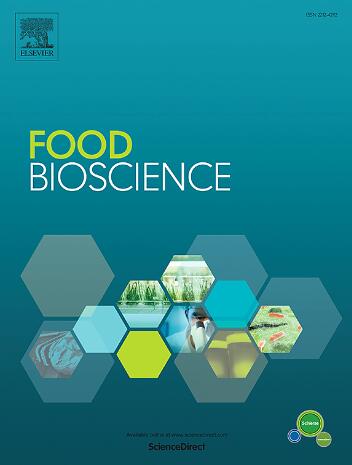Short-chain fructooligosaccharides synthesis using a commercial enzyme complex from Aspergillus sp. and anti-cancer activity on HCT116 and HT-29 cell lines
IF 4.8
1区 农林科学
Q1 FOOD SCIENCE & TECHNOLOGY
引用次数: 0
Abstract
Over the last years, short-chain fructooligosaccharides (FOS) have gained significant attention as valuable food and dietary supplement components. Apart from implications such as dietary fibres, sweeteners, and humectants, FOS are hailed for their prebiotic properties. Moreover, much research is dedicated to their role as anti-cancer agents. Despite the ongoing interest, both technical aspects, challenges of FOS production, and their anti-cancer role necessitate more in-depth investigations to understand their healthcare role better. This study aimed to optimise critical FOS synthesis parameters using a commercial enzyme, Viscozyme® L, to obtain a preparation with a high FOS content. A central composite design and response surface methodology evaluated the effect of pH, temperature, synthesis time, substrate, and enzyme load on multiple responses, chosen as independent variables, were utilised to define optimal conditions. Under the optimal conditions (temperature 50 °C, pH 5.5, sucrose concentration 352 g/L, enzyme concentration 2.5% v/v, and 5.5 h of reaction), a preparation with a total FOS content of 58.8% was obtained. The FOS preparation showed minimal antioxidant capacity in the ORAC, CUPRAC, and ABTS*assays. In addition, the cytotoxicity of FOS against tested cell lines was evaluated. FOS did not reduce HT-29 cell viability even at the concentration of 2.5 mg/mL, whereas FOS inhibited the proliferation of HCT116 cells by 50% at 2.35 mg/mL. Finally, the sensitisation effect of FOS on HCT116 cell treatment with doxorubicin has been revealed.利用曲霉商业复合酶合成短链果寡糖以及对 HCT116 和 HT-29 细胞系的抗癌活性
在过去几年中,短链果寡糖(FOS)作为有价值的食品和膳食补充剂成分受到了广泛关注。除了作为膳食纤维、甜味剂和保湿剂之外,果寡糖还因其益生特性而备受赞誉。此外,许多研究还致力于探讨它们作为抗癌剂的作用。尽管人们对 FOS 一直很感兴趣,但无论是技术方面,还是 FOS 生产所面临的挑战,以及它们的抗癌作用,都需要进行更深入的研究,以更好地了解它们的保健作用。本研究旨在使用商业酶 Viscozyme® L 优化关键的 FOS 合成参数,以获得高 FOS 含量的制剂。采用中心复合设计和响应面方法评估了 pH 值、温度、合成时间、底物和酶载量对多种响应的影响,并将其选为自变量,以确定最佳条件。在最佳条件下(温度 50 °C、pH 值 5.5、蔗糖浓度 352 克/升、酶浓度 2.5% v/v、反应时间 5.5 小时),制备出的 FOS 总含量为 58.8%。在 ORAC、CUPRAC 和 ABTS* 分析中,FOS 制剂显示出最小的抗氧化能力。此外,还评估了 FOS 对测试细胞株的细胞毒性。即使在 2.5 毫克/毫升的浓度下,FOS 也不会降低 HT-29 细胞的活力,而在 2.35 毫克/毫升的浓度下,FOS 可抑制 HCT116 细胞增殖 50%。最后,还揭示了 FOS 对用多柔比星处理 HCT116 细胞的增敏作用。
本文章由计算机程序翻译,如有差异,请以英文原文为准。
求助全文
约1分钟内获得全文
求助全文
来源期刊

Food Bioscience
Biochemistry, Genetics and Molecular Biology-Biochemistry
CiteScore
6.40
自引率
5.80%
发文量
671
审稿时长
27 days
期刊介绍:
Food Bioscience is a peer-reviewed journal that aims to provide a forum for recent developments in the field of bio-related food research. The journal focuses on both fundamental and applied research worldwide, with special attention to ethnic and cultural aspects of food bioresearch.
 求助内容:
求助内容: 应助结果提醒方式:
应助结果提醒方式:


